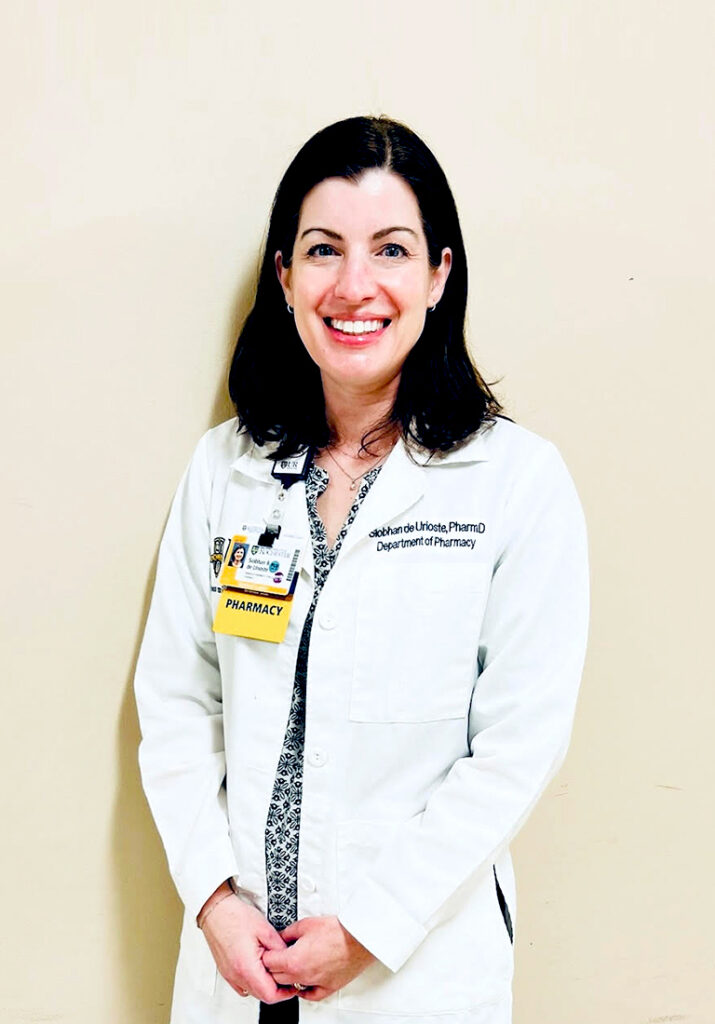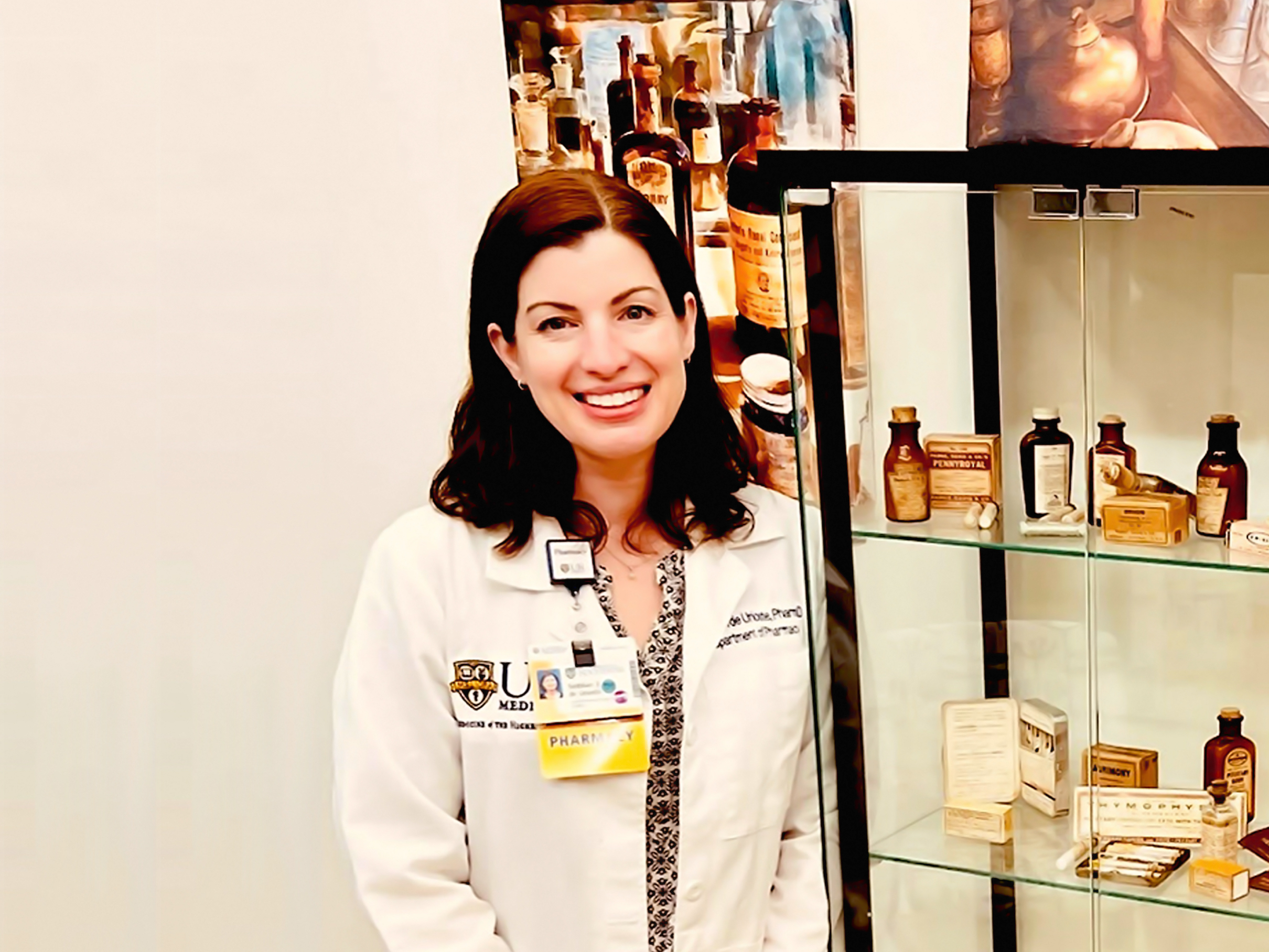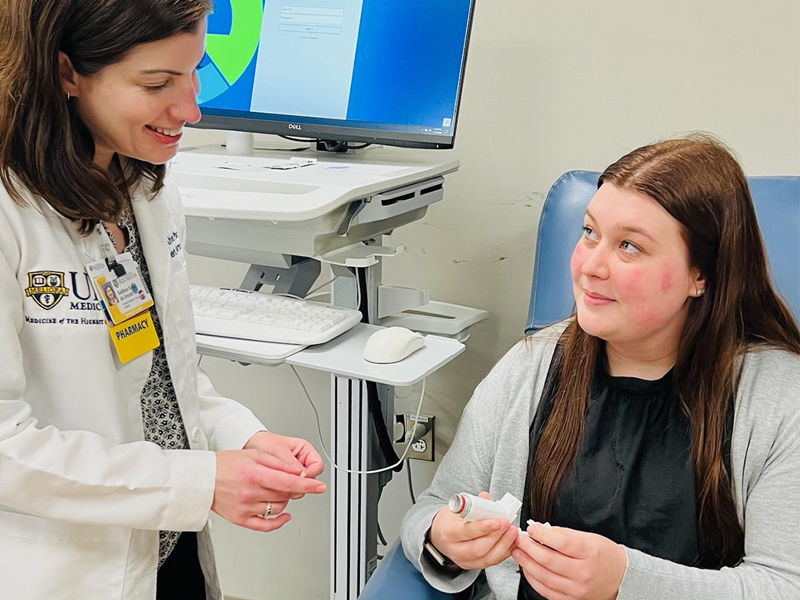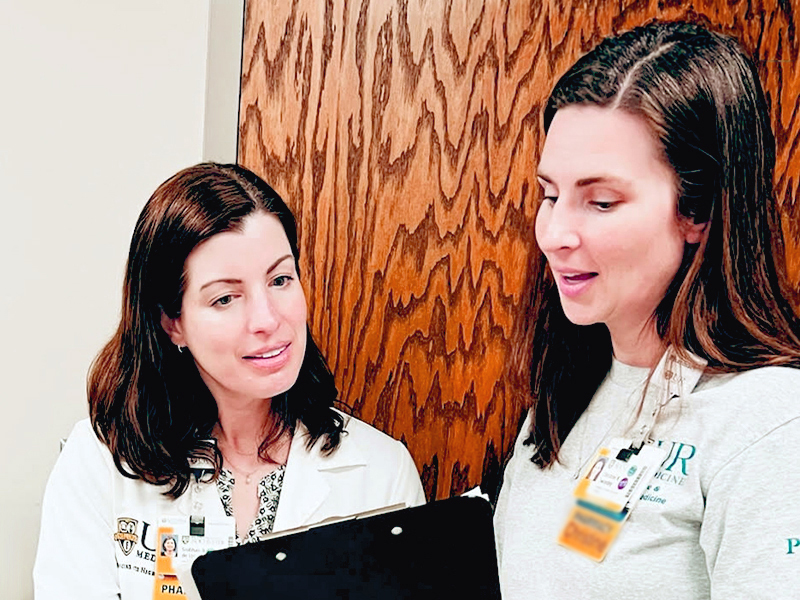


PHARMACISTS UP CLOSE
Siobhan de Urioste
PharmD, BCPS
“When I was a pharmacy technician, I was impressed by the impact our lead pharmacist had on the community. Patients knew they had a resource they could turn to at any time. Witnessing that inspired my own journey toward becoming a health-system pharmacist.”
-Dr. Siobhan de Urioste
As an inpatient pharmacist at the University of Rochester Medical Center, Siobhan de Urioste builds connections within her patients’ care teams to ensure they’re receiving the best possible care.
“I’m a conduit between the patient and the care team. A patient can be treated by a wide variety of providers, each with different specialties, so a big part of what I do is making the connections between what each specialist does and sharing that knowledge across the care team. So that, for example, your neurologist knows what your urologist is doing and vice versa.”
A patient can be treated by a wide variety of providers, each with different specialties, so a big part of what I do is making the connections between what each specialist does and sharing that knowledge across the care team.”
To Siobhan, this care advocacy motivates to shift a patient’s perception of an inpatient pharmacist from a support expert to a frontline provider.

“Much of what health-system pharmacists do has often been viewed as a behind-the-scenes role. As care teams have become more and more connected, our roles have shifted towards more direct patient care. Because of that, it has become more and more important for pharmacists to develop our skills in communicating with patients, so that we can be seen as a resource they can turn to for advice.”
Siobhan’s experience as a pharmacy technician in a community pharmacy plays a big role in how she develops relationships with her patients.
“The pharmacist I worked with as a technician did not just meticulously fill prescriptions and navigate drug interactions but made himself available to everyone. He spent a lot of time taking walk-in appointments and phone calls with patients to discuss their medications and help them understand their care plans. That played a big role in how I approach my patients as well.”

For Siobhan, educating and counseling patients is key to the effectiveness of a treatment plan.
“One of our main responsibilities as health-system pharmacists is to engage the patients in their own care. We do this by learning about their situations at home, their families, their interests. When we get to know our patients, we understand what barriers they might have to their care, whether it’s a medication might be too expensive or a treatment plan too time intensive for their lifestyle. We then work with them and their providers to find an alternative that fits their needs. Because a treatment that can’t be followed as prescribed isn’t going to be effective.”
One of our main responsibilities as health-system pharmacists is to engage the patients in their own care.”
A crucial element to empowering a patient can only be achieved by building a personal relationship, which requires health-system pharmacists to be direct providers of patient care.
“If I’m going to help a patient tailor their care around their situation, I’ve got to know it. That means I need to make rounds in the hospital. I’ve got to sit with a patient and get to know them, earn their trust, and eliminate any preconceived notions they might have. The only way to do that is through direct, personal interaction with patients.
For Siobhan, being a conduit between the care team and patients is how she ensures better health outcomes and what it means to be your pharmacist.
